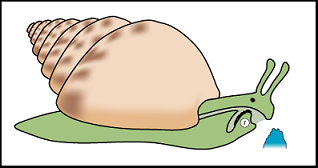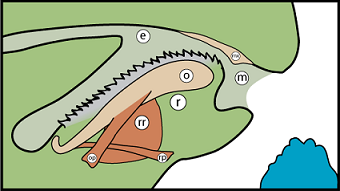Nutrition
Yet again, because no information is
available for this species pertaining to its nutritional needs we
will focus on the nutrition of terrestrial snails, as a whole.
Diets among terrestrial snails vary
rather widely (Hotopp and Pearce 2006). They use their radula
to eat on the move, evaluating what is taken up as it slowly moves
along (Hotopp and Pearce 2006). Terrestrial snails eat
anything from rotten wood, algae, sap, herbaceous plants to animal
carcasses, and the species which are carnivorous will eat other
snails as well as nematodes (Hotopp and Pearce 2006).
Land snails spend a disproportionate
amount of time crawling around and attempting to find food (Hotopp
and Pearce 2006). There are few predatory land snail species.
Terrestrial snail species tend to be omnivorous or herbivorous (Hotopp
and Pearce 2006). Snails have a specialized tongue-like organ
called a radula used for obtaining food (Nordsieck 2011). The radula is equipped with teeth made of a material called chitin
(Hickman et al 2012), and these teeth, which feel like sandpaper,
help to scrape up food particles into the mouth (Hotopp and Pearce
2006). Once the particles are lapped up by the radula they
enter the esophagus on the way to the gastric pouch, where the
digestive gland assists in digestion and excretion (Hotopp and
Pearce 2006).
Terrestrial snails have an open
circulatory system consisting of blood vessels and sinuses and a
heart (Hickman et al 2012). Because this is an inefficient way
to disperse oxygen throughout the body, snails, like other animals
with an open circulatory system tend to be slower (Hickman et al
2012).
Some terrestrial snail species are
intermediate hosts to different parasites (Hotopp and Pearce 2006),
though our species does not seem to be one of them.
Re



